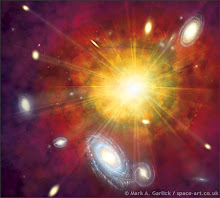In this post, I'm introducing to you a type of graphics which has the nature exactly opposite to the Cel-shaded graphics. Cel shading is used to give a comic effect to objects whereas Pixel Shading is used to make objects appear more real. As the name suggests, in this graphics a single pixel is coloured and many such pixels brought together produce the required image.
What is a pixel?
Now, Let's do something very interesting.
1. Open MS Paint. Open a 'New' drawing.
2. Access the 'Image' menu and click on 'Attributes'.

3. A window opens. Set Width=7 and Height=1. Make sure that units are in pixels.

3. A window opens. Set Width=7 and Height=1. Make sure that units are in pixels.
4. The drawable area shrinks to very small size. 'Zoom' the image from the 'view' menu.


5. By using pencil, fill each block of drawable area with colour of your choice. Each block represents a pixel.


5. By using pencil, fill each block of drawable area with colour of your choice. Each block represents a pixel.
7. You can increase the number of shades by increasing width.
So, as you can see, By painting each single pixel and then placing such pixels side by side, a beautiful wallpaper has shown up.
The pixel shading is also done in a similar manner. A pixel shader computes colour and other attributes for each pixel. Other attributes include lightning, bump mapping, shadows, translucency, depth etc. Many such pixels, which are designed independent of each other, when brought together produce the required pixel shaded image, scene, i.e the texture.
Once the texture becomes ready it is applied on the required 3-D object. It is similar to that when we wrap an object in a paper. Paper here is the texture. We draw the design on the paper(Design the texture) and apply it on the object(Apply the texture to the object).
Unlike cel-shading, Pixel shader contains various shades of a color which make the object appear more realistic.


Once the texture becomes ready it is applied on the required 3-D object. It is similar to that when we wrap an object in a paper. Paper here is the texture. We draw the design on the paper(Design the texture) and apply it on the object(Apply the texture to the object).
Unlike cel-shading, Pixel shader contains various shades of a color which make the object appear more realistic.


Observe these two images.Especially the material applied on Tyre of bike and the girl's frock.
The various attributes like Bump mapping, Z-buffering etc. which are applied to the pixel will be discussed in later posts. Here are more examples of Pixel Shading.




The various attributes like Bump mapping, Z-buffering etc. which are applied to the pixel will be discussed in later posts. Here are more examples of Pixel Shading.




-----------------------------------------------------------------------------------------------
Thanks to Siddhesh for help. This post needs to be improvised. If you have any suggestions or content, please let me know. Thank you.
Thanks to Siddhesh for help. This post needs to be improvised. If you have any suggestions or content, please let me know. Thank you.





0 comments:
Post a Comment